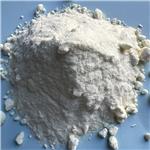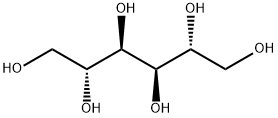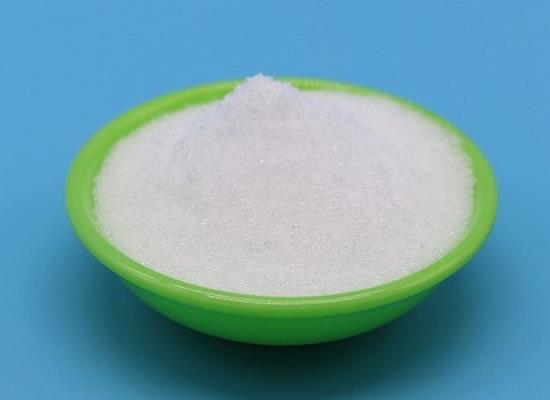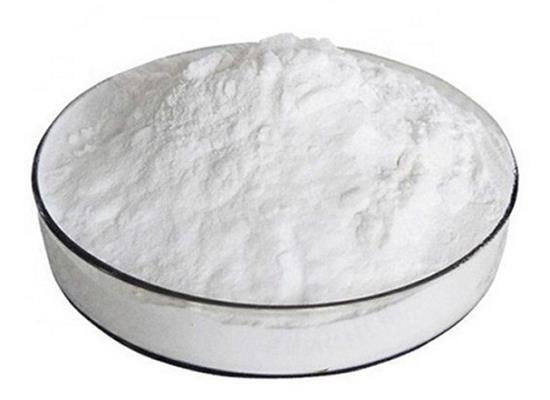D-Mannitol: Applications as Osmoprotectant and Metabolism in Fungi
General Description
D-Mannitol is a versatile carbohydrate polyol that plays a crucial role as an osmoprotectant and antioxidant in various organisms, particularly plants and fungi. While its exact mechanisms of action are not fully understood, it is believed to stabilize proteins and cellular structures under low osmotic potential as a compatible solute and mitigate oxidative stress as an antioxidant. In fungi, D-Mannitol serves as a significant metabolite, although its metabolism is complex and not fully elucidated. Studies have challenged the originally proposed cyclic model of mannitol metabolism, suggesting the involvement of multiple pathways and enzymes. Further research is needed to fully understand the intricacies of mannitol metabolism in fungi. Overall, D-Mannitol's multifaceted roles in stress response mechanisms highlight its significance in cellular protection and its potential applications in agriculture and medicine.

Figure 1. D-Mannitol
Overview
D-Mannitol is a versatile carbohydrate polyol, which belongs to the group of sugar alcohols. Sugar alcohols are reduced forms of aldose or ketose sugars and have an alcohol group instead of an aldehyde or keto group. Mannitol is structurally related to the aldohexose mannose and is one of the most widely distributed soluble carbohydrates in biological systems. It can be found in over 100 higher plant species, as well as in algae, fungi, and lichens. D-Mannitol metabolism has been well studied, and it is involved in various physiological processes in plants. It is particularly important in providing resistance to both biotic and abiotic stresses. However, the precise mechanism by which mannitol provides this protection is not fully understood. Recent research has shown that there is an interface between plant and fungal mannitol metabolism during plant-pathogen interactions. This has led to unexpected insights into the role of antioxidants and protein trafficking and secretion in stress response. In conclusion, D-Mannitol is an important carbohydrate polyol that plays a vital role in various physiological processes in plants. It is widely distributed in biological systems and has been extensively studied for its role in stress response. Ongoing research continues to shed light on the mechanisms underlying the protective functions of mannitol and its potential applications in agriculture and medicine. 1
Applications as Osmoprotectant
D-Mannitol serves a dual role as an osmoprotectant and antioxidant in various organisms, particularly plants and fungi, although the precise mechanisms underlying these functions are not fully understood. Despite being recognized for its high concentrations in salt-tolerant plants like celery, mannitol's in vivo concentrations are too low to solely function as an osmolyte. Instead, two main mechanisms are proposed for its osmoprotective action: as a compatible solute and as an antioxidant. Firstly, as a compatible solute, D-Mannitol interacts with the hydration shell around proteins and cellular structures, stabilizing them under conditions of low osmotic potential. This role is crucial in osmotolerant organisms such as yeast and algae. Secondly, D-Mannitol acts as an antioxidant, mitigating oxidative stress caused by reactive oxygen species (ROS) under conditions of decreased water potential. Studies have shown that mannitol effectively quenches hydroxyl radicals, a type of ROS, both in vitro and in vivo. Additionally, its presence at high concentrations in the chloroplast, a site of high oxidative stress, further supports its antioxidant function. However, the effectiveness of D-Mannitol as an antioxidant is subject to debate. While it exhibits higher reaction rates with hydroxyl radicals compared to other compatible solutes in vitro, the concentrations required for ROS quenching are often much higher than those observed in vivo. This suggests that other factors beyond direct ROS quenching may contribute to D-Mannitol's antioxidant properties. Overall, the multifaceted role of D-Mannitol as both an osmoprotectant and an antioxidant highlights its significance in cellular stress response mechanisms, although further research is needed to elucidate its precise mechanisms of action. 1
Metabolism in Fungi
D-Mannitol serves as a significant metabolite in fungi, particularly filamentous ones like ascomycetes, basidiomycetes, deuteromycetes, and zygomycetes. Initially proposed as part of a cyclic metabolic pathway by Hult and Gatenbeck, where it branched from glycolysis starting with fructose-6-phosphate, D-Mannitol was depicted as being synthesized by mannitol-1-phosphate dehydrogenase (M1PDH) and catabolized by mannitol dehydrogenase (MtDH). This cycle was believed to regenerate or produce NADPH and serve as a precursor to storage compounds and toxins. However, subsequent studies challenged this cyclic model. Studies in various fungi such as Aspergillus candidus and Sclerotinia sclerotiorum contradicted the proposed cyclic nature of mannitol metabolism. For instance, in A. candidus, M1PDH activity was found to be significantly higher than MtDH activity, contrary to predictions. Additionally, mannitol-phosphate phosphatase (MPP) in S. sclerotiorum catalyzed reactions using various substrates, suggesting the existence of alternative pathways. Newer technologies, including gene expression studies and targeted gene disruptions, have provided further insights. Spatial and temporal separation of M1PDH and MtDH expression in Aspergillus niger indicate that D-Mannitol metabolism may not follow a cyclic pattern. Gene disruptions in various fungi like Botrytis cinerea and A. alternata have demonstrated that while M1PDH is crucial for D-Mannitol biosynthesis, it might also be involved in catabolism. Additionally, the identification of additional D-Mannitol biosynthetic genes in certain fungi suggests the existence of alternative pathways or enzymes involved in mannitol metabolism. Overall, D-Mannitol metabolism in fungi is complex and not fully elucidated, with evidence suggesting the involvement of multiple pathways and enzymes beyond the originally proposed cyclic model. Further research is needed to fully understand the intricacies of mannitol metabolism in fungi. 2
Reference
1. Patel TK, Williamson JD. Mannitol in Plants, Fungi, and Plant-Fungal Interactions. Trends Plant Sci. 2016; 21(6): 486-497.
2. Meena M, Prasad V, Zehra A, Gupta VK, Upadhyay RS. Mannitol metabolism during pathogenic fungal-host interactions under stressed conditions. Front Microbiol. 2015; 6: 1019.
);Related articles And Qustion
Lastest Price from D-Mannitol manufacturers

US $10.00/KG2024-09-19
- CAS:
- 69-65-8
- Min. Order:
- 1KG
- Purity:
- 99%
- Supply Ability:
- 10 ton

US $0.00/KG2024-09-18
- CAS:
- 69-65-8
- Min. Order:
- 25KG
- Purity:
- 98%min
- Supply Ability:
- 30tons/month



